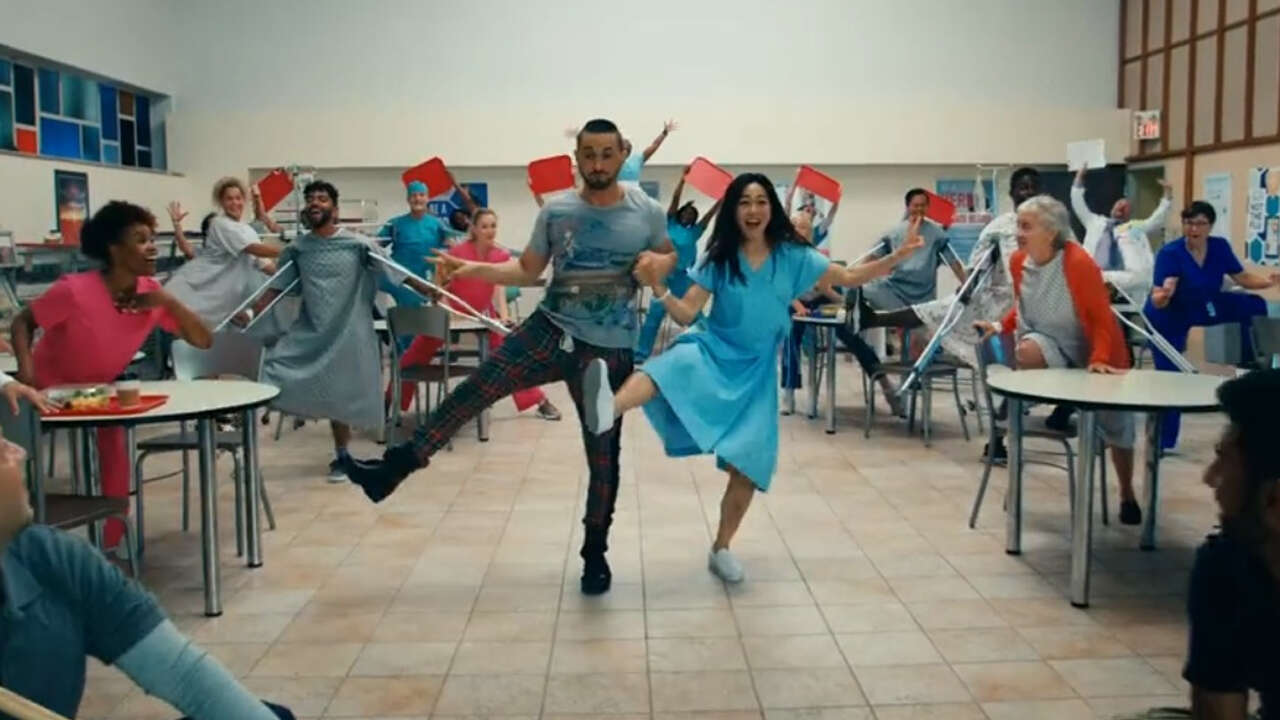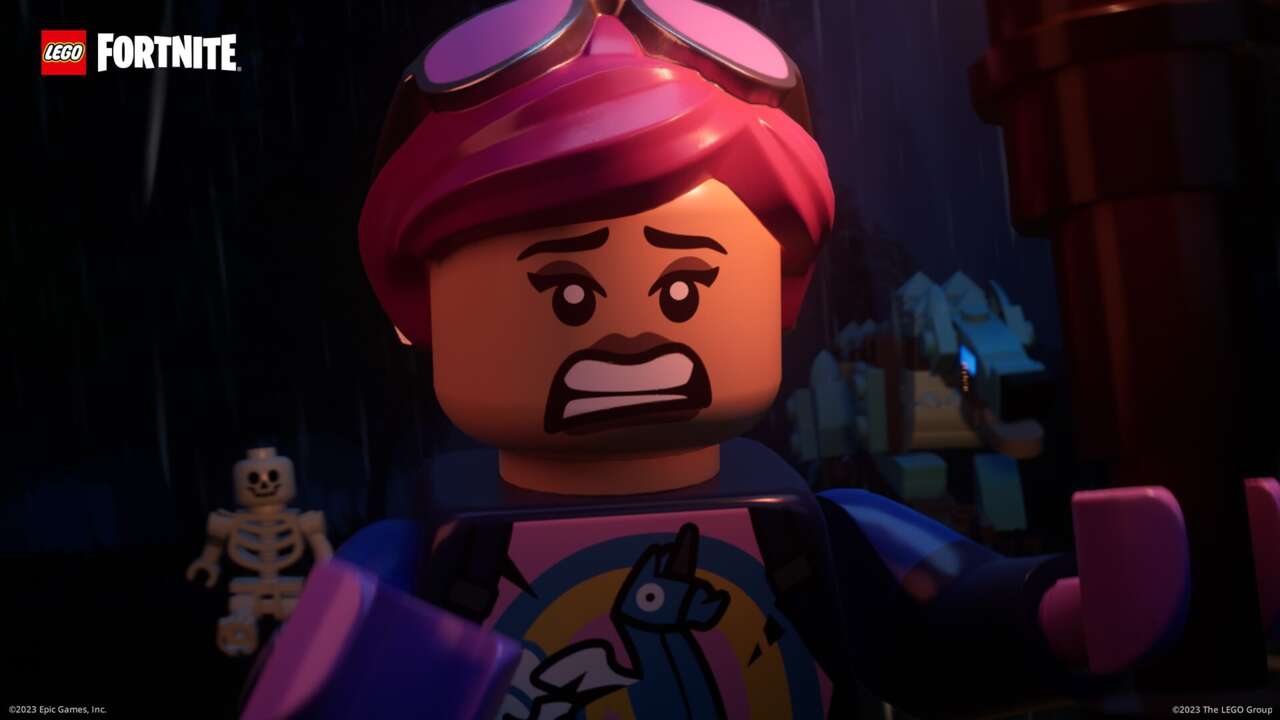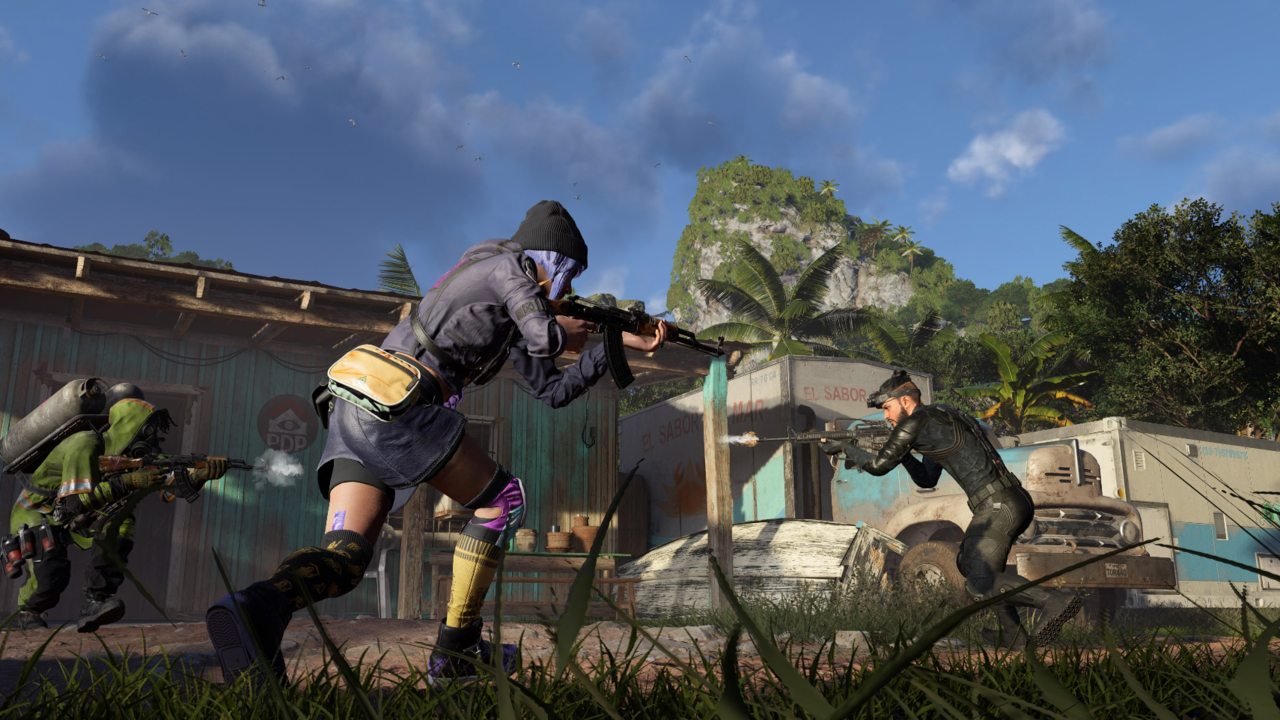Stadia’s Shutdown: The History of Google’s Doomed Project, From Those Inside and Out
Google Stadia’s announcement back in 2019 was full of big promises for what the tech company – then largely an outsider to the business – called the “future of gaming.” It was to be a streaming platform that would span multiple devices, allowing players to access games across hardware they already had in their homes without buying expensive console boxes. It would integrate with YouTube, allowing capture, streaming, and sharing as well as the ability to jump straight from a YouTube video of a game into an instance of that same game. It was promised to be more powerful than the PS4 and Xbox One combined, with the word “teraflops” tossed around gleefully demonstrating its supposed power. These promises were massive ones for a company with hardly a gaming credit to its name, but they were backed not just by money and power and tech prowess, but also by storied developers like Jade Raymond, major studios like Bethesda, indie darlings like Tequila Works and Typhoon Studios (via acquisition), and engine creators like Unreal and Unity.
Now, not even three years after launch, the “future of gaming” dream is dead, and numerous projects, jobs, partnerships, and promises with it. What happened here? How did the ambitious promises of a company with plenty of money to spend, superb technology, skillful developer talent, and everything to gain come crashing down so quickly and so dramatically? We spoke to a number of employees and developers who worked with Stadia to find out.
Grasping for Clouds
The initial announcement of Google Stadia invited a healthy mixture of praise and criticism, but upon the reveal of the business model later in 2019, public perception of Stadia took its first (perhaps ominous) negative turn. At Stadia’s launch in November of 2019, Google Stadia would only be available through a pricey founder’s edition bundle and a Pro subscription, almost immediately gutting its promises of accessibility. Games, meanwhile, would largely sell for full price alongside the subscription fee. The fears that these announcements evoked remained through Stadia’s launch, where the critical consensus more or less boiled down to the technology being revolutionary but the business model a disaster.
Internally on Google Stadia’s team, that impression was echoed. One former Google Stadia employee I spoke with for this article told me that they initially felt like they had joined a “winning project” thanks to the talent that had been brought on board and the impressive tech. Another employee still with the company described Stadia as “ambitious” but “shockingly effective” as a product, especially for reaching people who didn’t necessarily self-describe as “gamers” or keep up with console lingo and specifics. Its early days were characterized too by sizable budgets, especially for content acquisition, and Google made plenty of promises internally that it was in it for the long haul.
But around the launch of the service, that impression began to sour internally, as some felt Google was ignoring crucial problems – particularly the need for a stable connection, the lack of compelling, unique game libraries, and a launch pricing structure that, in the words of one source “probably undercut” Google’s early promises of accessibility for all. These problems were apparently regularly raised by those within Google Stadia’s team who had come from gaming backgrounds, only to have them dismissed by some on the tech-focused side. According to multiple former and current employees, as well as those who spoke to IGN for this piece, the latter group didn’t always understand the criticisms or know to trust the expertise of those who did.
“We [on the gaming side] basically were ignored,” a former employee said. “I think there was very much a ‘Google way of doing things’ that the gaming side understood but didn’t see as applicable to [what we were doing on Stadia]. We wanted to meet in the middle, but often the Google side and what felt like an unnecessarily flat hierarchy got in the way… whenever we made a decision, so many people got to leap in, often people who weren’t subject matter experts, but just had opinions based on their work on… other products.”
Our source added their team specifically began to feel stress building as it became clear Stadia may not deliver on the promises it had made to audiences. Though those concerns were raised, they said, leadership at the director level and above didn’t seem willing to fight to make them heard in a meaningful way.
Developers In, Developers Out
Concerns escalated in early 2021, where our sources said missed user acquisition targets in the previous year were one key factor in its shift to a white label tech product. Though Google had previously had a culture of taking big swings at unrealistic targets without consequence, recent internal shifts away from that culture unfortunately timed with Stadia’s misses specifically. Tragically, the consequence of this shift was the shuttering of Stadia’s internal studios barely a year after it had first properly set them up. That meant significant layoffs of around 150 employees, developers who had been drawn in by the exciting tech and promises of enough resources and runway to make games that would make meaningful use of it, only to have those promises shattered in less time than most AAA games take to prototype. Numerous unannounced, in-progress games were canceled. Some, mercifully, found homes elsewhere.
It’s due in no small part to these struggles that in 2021, we saw a major voluntary exodus of key Google Stadia talent as well. Aside from Assassin’s Creed co-creator Jade Raymond, Stadia also lost John Justice that year, and then Raymond’s new studio, Haven Entertainment, poached six other staff members. The departures prompted understandable concern for the health of Google’s gaming arm but, by May last year, Google was making public reassurances that Stadia was “alive and well.” Indeed, Google released over 100 games on Stadia in 2021, roughly the same amount it had released the previous year.
“
Stadia’s tech was still good, and its external developer relationships had remained so, too. In fact, through all the criticism Stadia received over the years, one group that Google Stadia was always incredibly popular with was its third-party development partners. Gwen Frey, developer of Kine, told me way back in 2019 that not only was the money for exclusives good, but game development with cloud technology was an unexpected benefit for her distributed team. Gylt creative director Raul Rubio told GamesIndustry.biz early the following year that under Google, Gylt had the “smoothest production for a Tequila Works game ever” in no small part thanks to the tech. As the COVID-19 pandemic raged later in 2020, Bungie COO Patrick O’Kelley said in an IGN interview that Stadia had been an “amazing solution” for running playtests while working remotely. Those are just a few examples.
That positive relationship with third-party partners continued through the shuttering of Stadia’s internal studios, all the way to the bitter end. Dylan Cuthbert, founder and CEO of Q-Games, called the team at Stadia “great” when I asked for his thoughts in the wake of Stadia’s shutdown, saying they were open both to offering ideas for Pixeljunk Raiders as well as inviting the Q-Games team to brainstorm ideas for Stadia more generally. No More Robots CEO Mike Rose, though initially hesitant to embrace the platform, ultimately signed on because of how good the financial deals were, saying the money was “worth a roll of the dice.”
In fact, Brandon Sheffield, creative director at Necrosoft Games said that, if anything, Google Stadia improved for developers like him over time, especially in the last year. Though the certification process was “really hardcore,” he said that the bright side was that developers could get through certification on other platforms very easily as a result. Plus, Stadia had free certification QA, meaning that in an ideal scenario (though it didn’t always work perfectly), Google would tell developers what they had failed and how, with guidance on how to get it sorted out.
“Another interesting thing about Stadia in recent years is that they’d become really receptive to developer feedback, to the extent they could change things,” Sheffield continued. “We came up with the idea to do a ‘Steam connect’ style same-screen online multiplayer implementation using Stadia, which amazingly nobody had ever asked about before. We thought it was possible and had some back and forth with them, during which they wrote a whitepaper to prove out the latency, and whether it’d be good enough for us to get a four player action game going. It was going to work, and we were going to be the first to implement it. After that, any dev would’ve been able to do a similar implementation, and any dev with same-screen multiplayer would’ve been able to have online, essentially for free.”
So throughout 2021 and into 2022, while Stadia wasn’t exactly the blossoming “future of gaming” that had been promised, it was cultivating a positive reputation as a technology and B2B platform. What, then, happened to cause its closure?
Future Imperfect
Unfortunately, it doesn’t sound as though even Stadia employees internally have a clear answer, at least not outside the top level. Though the shutdown was speculated about internally leading up to the announcement, nothing official came through until the morning when VP Phil Harrison sent an email (leaked via an anonymous Redditor and verified by IGN) to the team early on the morning of September 29, informing them of an 8:30 AM PT meeting where they were then told of the situation – less than a full hour before the public announcement.
Google itself has cited low customer demand as the reasons for Stadia’s end, and that’s certainly a reasonable enough answer. However, another theory, put forward by a current employee we spoke to, ties it to the recent spree of games industry acquisitions popping up over the last few years. As Stadia moved to a B2B model, our source suggested, it necessitated a thriving industry of independent publishers that weren’t explicitly tied to individual platform holders like Xbox or Sony. With so many smaller and mid-sized companies gobbled up by the likes of Microsoft, Embracer, and other giants with big console exclusivity deals either inherent or imminent, as they put it, “Who is there left to sell the dream to?”
“
For the handful of developers who did buy into the dream, Stadia’s closure came as an unexpected and unpleasant surprise. Just that morning, a new game – Hot Wheels Unleashed Game of the Year Edition – had launched on Stadia, free for Pro Members. Cuthbert, Rose, and Sheffield all told me they learned about Stadia’s closure via news articles or social media, rather than Google itself – a story that seems universal among all Stadia partners who have spoken publicly about it.
Rose told me that his impression was that most people bringing games to Stadia knew it wouldn’t last forever due to a lack of audience interest, even though the timing of the shutdown itself caught him as off-guard as it did everyone else. Cuthbert recalled that he was similarly blindsided when Google shut down its Stadia game studios – at the time, Q-Games had been actively developing Pixeljunk Raiders, and was concerned that the 2021 studio shutdown “didn’t bode well.” Even so, the recent full shuttering still came as a shock.
“We’d worked with the Stadia team as recently as last month to enable Click-to-Play trials,” Cuthbert said. “So we were still exploring new opportunities and welcoming new players to the game.”
Sheffield was in a similar spot with his company’s Hyper Gunsport. “I don’t get the sense that folks at Stadia knew this was happening,” he said. “We were having marketing conversations [the week before], and we got a new SDK update two days before the shutdown announcement. I think everybody got blindsided by it, and they just weren’t doing the numbers the parent company wanted, fast enough. It’s a shame because they were on a real upward trajectory.”
This means that all three of the developer/publishers we spoke to have been forced to scramble to figure out what will become of their Stadia-entangled games. Cuthbert said he’s still waiting for more information from Google about what will happen to the Stadia-exclusive Pixeljunk Raiders. Though Q-Games owns the IP, he said there’s a “royalty encumberment” he hopes Google will waive, which would make it easier for him to release it elsewhere and prevent its total disappearance.
“The game was developed in Unreal, so a port wouldn’t be very challenging,” Cuthbert said. “However, in the same way I reworked The Tomorrow Children into Phoenix Edition [an upgraded re-release of a once-lost PS4 game], I want to re-work Raiders a bit too as we had to simplify the gameplay a little for the last third of development by request of the Stadia team. I realize now in retrospect that maybe Stadia was already downsizing expenditure at that point.”
Rose is similarly waiting for an update on the status of Soccer Story, which No More Robots is publishing from developer PanicBarn. He said that his team was “literally about to do final submissions” for the Stadia release, and that both No More Robots and PanicBarn have “put a hefty amount of work” into the Stadia version that has all gone to waste.
“The big question for us is whether Google are now going to pay us what they were going to owe us had the game launched. If they don’t, it’s a big problem, as it just means we’ve wasted a bunch of time and money on the Stadia port. I still have no clue what’s happening with that.”
Rose added that if Google does follow through with the payments as planned, he’ll consider the effort to have been worth it.
And then there’s Sheffield, who finds himself and Necrosoft in a strange financial situation thanks to Stadia’s closure. After a pleasant relationship releasing Gunsport as a 2020 Stadia exclusive, Necrosoft was even more interested in releasing the sequel on Stadia when Google announced its new Stadia Pro revenue plan, which sends a percentage of Stadia subscriptions directly to developers.
“
“This model proved super excellent for indie devs, and is a really good developer-positive model. Unfortunately that model died with the platform, because nobody else does that! By our calculations launching on Stadia Pro would have recouped all of our dev costs in one go. Now we’ll have to work a little harder to make that happen.”
Sheffield added that he’s unsure what will happen to Hyper Gunsport now, or even the original Gunsport – which he said is probably “going down with the ship” since Hyper Gunsport would have theoretically supplanted it. Hyper Gunsport will still come to Steam and consoles, but without the Stadia revenue boost, Necrosoft now will have to do some financial recalculations to support its future games.
Internally, at least, the situation is a bit more optimistic. One current employee told me that roles had already been found within Google for most of the Stadia team. However, they voice concern for one more group of folks who are being harmed by Stadia’s sudden and swift shutdown: consumers. Many people, they say, joined Stadia due to its accessibility and affordability, but now have nowhere to go. Refunds are cold comfort if you can’t then buy those games on any other platform you have access to – though they suggest Xbox’s Game Pass and xCloud combination may serve to fill the gap with time.
Sheffield echoed that employee’s thoughts for the players, saying that the Stadia fanbase was “one of the nicest groups of fans” he’d seen on an individual platform.
“Just very supportive of new games, and even when they were constantly under fire from people for caring about the platform, they’d be like, ‘Well, you’re welcome to your opinion, but maybe if you tried it you’d like it,’” he said. “They were just really positive! It was surprising in this day and age. And they cared about indie games that came to the platform – our highest number of concurrent players for Gunsport was at one point higher than reported concurrents for Destiny, if you can believe that.”
With developers and projects scattered, partners scrambling to find new homes for their games, and customers drawn in by promises of affordability and accessibility only to have their games taken away, the sad conclusion of the Stadia “future of gaming” pitch is that, at least for Google, gaming had no future at all. When Stadia shutters in January of next year, no visible traces will be left of it – no games libraries, no service, no console boxes. Just an e-waste pile of scrapped controllers (unless Google listens to fan petitions to unlock wireless capabilities) and streaming prowess that will dissolve quietly into the technological aether of Google white-labeling.
For now, the future of gaming will continue to be decided by those already entrenched in the business, with Google’s spectacular Stadia nosedive perhaps serving as an unintended warning for other tech companies looking to buy their way into its destiny.
Rebekah Valentine is a news reporter for IGN. You can find her on Twitter @duckvalentine.
Check out our Latest News and Follow us at Facebook
Original Source







